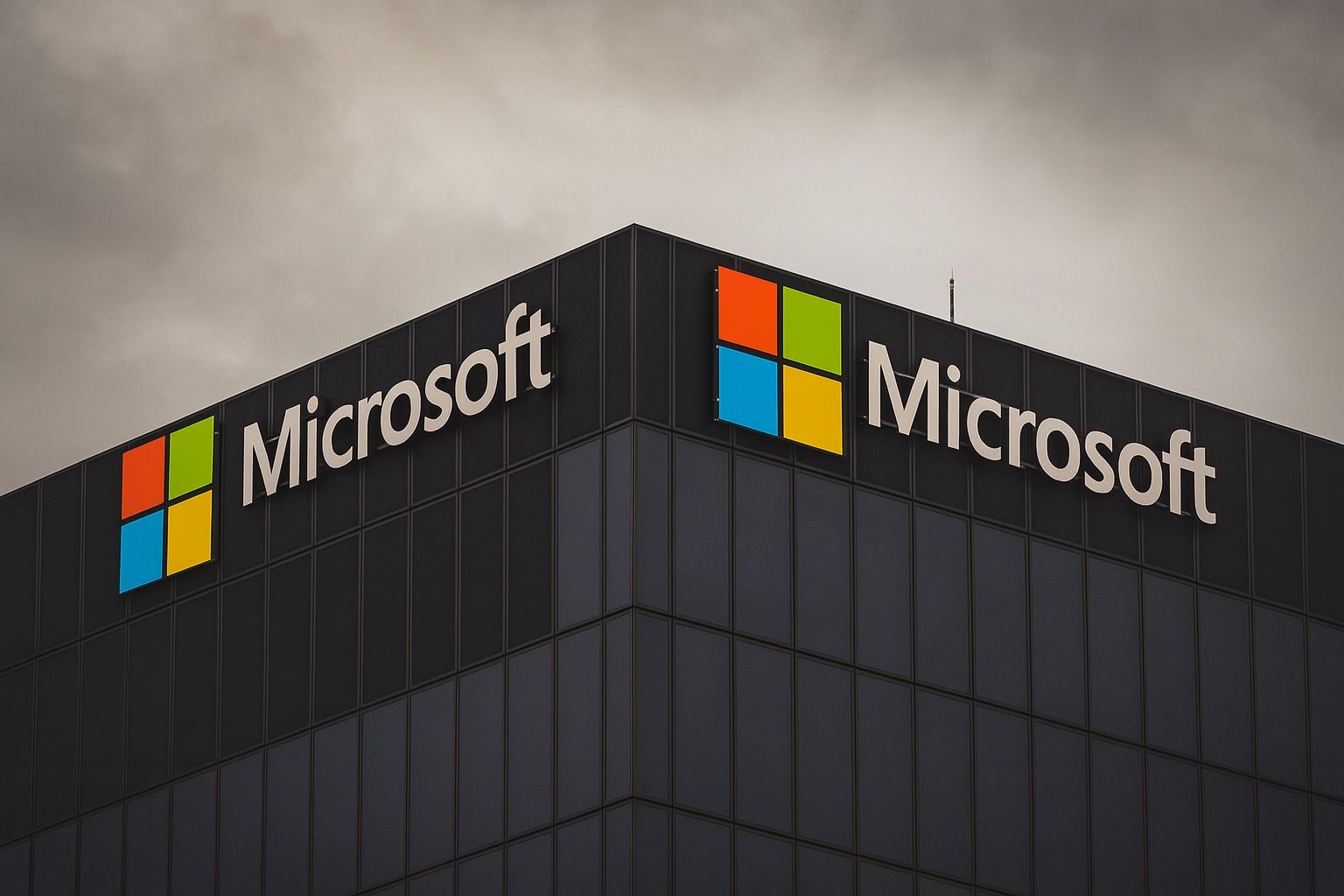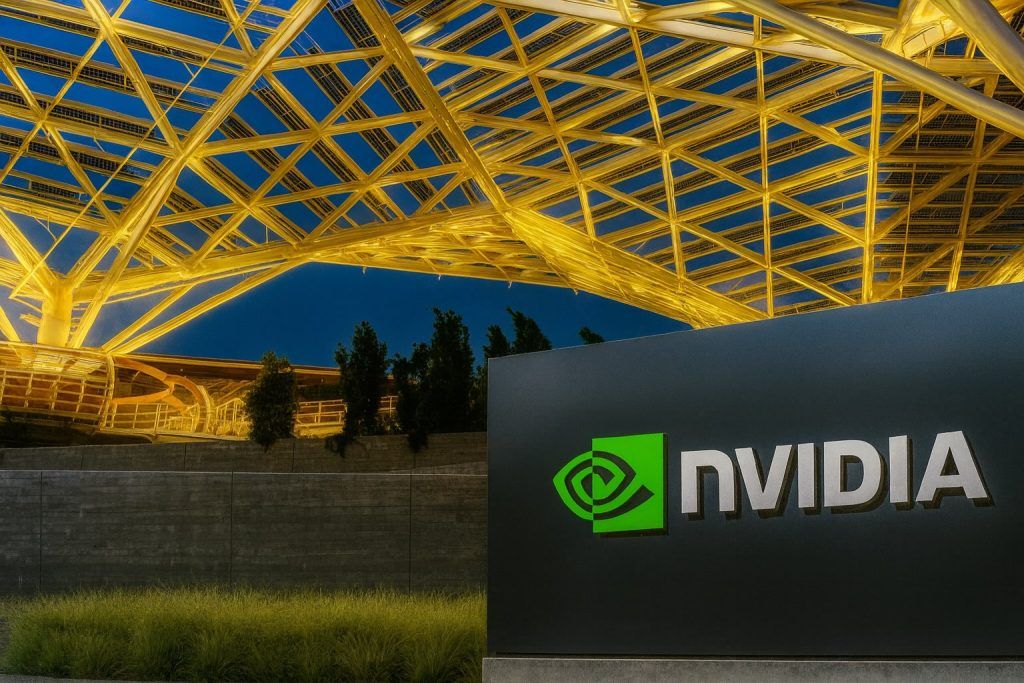Microsoft stock (NASDAQ: MSFT) is starting Friday, November 14, 2025, on the back foot as investors reassess richly valued AI leaders, digest a new Washington push to curb Nvidia’s China exports, and react to fresh Microsoft AI infrastructure and security headlines. Here’s what traders and long‑term investors should know about MSFT before the opening bell.
Disclaimer: This article is for informational and educational purposes only and does not constitute financial advice or a recommendation to buy or sell any security.
1. Where Microsoft stock stands before the bell
- Thursday’s close: Microsoft finished the November 13 session at $503.29, down about 1.5% on the day, after trading between $501.29 and $513.50. [1]
- Recent drift from the highs: The stock’s late‑October closing peak was around $542, leaving MSFT roughly 7–8% below its recent high coming into today’s session. [2]
In pre‑market trading this morning, multiple data providers show Microsoft changing hands around the $500 level, modestly below Thursday’s close:
- StockAnalysis shows a pre‑market quote of $499.71 at 7:01 a.m. ET, about 0.7% lower than Thursday’s close. [3]
- Broker platform Public reports MSFT at $500.13, down 0.63% in early pre‑market action. [4]
Taken together, that suggests a slightly negative tone for MSFT ahead of the open, broadly in line with the cautious mood across big tech.
2. Macro backdrop: Tech under pressure, AI “bubble” worries, and Nvidia in focus
Today’s trading in Microsoft is happening against a choppy macro and sector backdrop:
- US equity futures are pointing lower again after Wall Street’s sharp tech‑led sell‑off earlier this week. As of early morning, Nasdaq 100 futures are down roughly 0.5%, with S&P 500 futures off about 0.3%, extending weakness after the steepest one‑day decline in about a month. [5]
- Tech has been the biggest drag on indexes through late October and early November amid questions about an “AI‑fueled valuation bubble,” heavy capital‑spending plans from hyperscalers, and fading confidence in near‑term rate cuts. [6]
Looking ahead, Nvidia’s upcoming earnings are seen as one of the last major catalysts of the year for AI‑exposed stocks. Reuters notes that investors are intensely focused on what Nvidia says about demand and hyperscaler spending; capital‑expenditure commentary from Microsoft and peers has so far shown no sign of slowing AI infrastructure build‑outs. [7]
For Microsoft, that means:
- The stock is trading as a proxy for AI infrastructure spending (and for hyperscaler demand for Nvidia GPUs).
- Any shift in sentiment about AI capex sustainability or an “AI bubble” can move MSFT even when there’s no company‑specific earnings news.
3. New Washington headline: Microsoft backs Nvidia export‑curb bill
One of the most important Microsoft‑related headlines today is out of Washington:
- Amazon and Microsoft are backing US legislation – often referred to as the GAIN AI Act – that would further restrict Nvidia’s ability to export advanced AI chips to China, according to reports originally highlighted by the Wall Street Journal and summarized by Reuters and Seeking Alpha. [8]
Why this matters for MSFT:
- It underscores Microsoft’s role as a politically aligned AI infrastructure provider, closely cooperating with US policymakers on export controls and national‑security concerns.
- Stricter limits on Nvidia’s China exports could tilt more AI capacity and investment toward US and allied markets, where Microsoft’s Azure and AI platforms are deeply embedded.
- However, anything that compresses Nvidia’s overall growth narrative can ripple through the entire AI complex, including hyperscalers like Microsoft that depend on Nvidia’s cutting‑edge chips.
In the near term, this is more of a sentiment and ecosystem story than a direct line‑item change for Microsoft’s P&L, but traders will be watching how Nvidia, Amazon, and Microsoft trade as a group on the news.
4. “Planet‑Scale” AI Superfactory: Microsoft doubles down on massive AI infrastructure
On the company‑specific side, Microsoft is leaning even harder into AI infrastructure:
- Today, Microsoft is in the spotlight for unveiling a “planet‑scale AI superfactory” – a vast, interconnected infrastructure designed to train advanced AI models much faster and more efficiently. [9]
- At the center is the Fairwater AI datacenter network, linking major facilities in Wisconsin and Atlanta via a dedicated high‑speed backbone so they function as a single logical system despite being ~700 miles apart. [10]
- The system aggregates hundreds of thousands of Nvidia Blackwell GPUs in rack‑scale GB200 NVL72 setups to cut model‑training timelines from months to weeks. [11]
This announcement dovetails with a broader wave of AI‑infrastructure news around Microsoft:
- AI firm Anthropic has disclosed a $50 billion US infrastructure investment plan that includes new data centers and deepened cooperation with hyperscalers like Microsoft to power its Claude models. [12]
- Earlier this month, Microsoft also struck a $9.7 billion cloud and Nvidia‑chip deal with data‑center operator IREN and a separate multi‑billion‑dollar GPU deployment agreement with AI cloud startup Lambda, both aimed at easing the global shortage of AI compute capacity. [13]
Investor takeaway:
- These moves reinforce Microsoft’s status as a core “picks and shovels” provider for the AI boom—but they also highlight the sheer magnitude of capital expenditure. The company’s quarterly AI‑related capex has climbed toward $35 billion, a scale that is front‑and‑center in the debate about an AI spending bubble. [14]
5. New AGI freedom: Microsoft no longer constrained by its old OpenAI deal
Another theme investors are watching is Microsoft’s evolving relationship with OpenAI and its in‑house AI ambitions.
Recent reporting from Business Insider and other outlets clarifies that:
- Under the previous Microsoft–OpenAI agreement, Microsoft was effectively barred from developing its own artificial general intelligence (AGI) systems through 2030; the company focused on providing capital, infrastructure, and commercialization for OpenAI’s models instead. [15]
- A renegotiated deal now allows Microsoft to pursue AGI independently or with other partners, removing that contractual ceiling. [16]
- Microsoft AI CEO Mustafa Suleyman has formed a new “Microsoft AI Superintelligence” team whose goal is to build frontier‑grade models in‑house, supported by massive investment in proprietary AI chip clusters and cloud infrastructure. [17]
For Microsoft shareholders, this shift means:
- The company is no longer merely OpenAI’s infrastructure partner – it is now a direct competitor in frontier models, joining Google, Meta, Anthropic, xAI and others.
- The strategy reinforces the investment case for Microsoft as a long‑term AI platform leader, but it also increases execution, regulatory, and cost risk, since the company is taking on more of the AI stack itself.
6. Security headlines: AI inference vulnerabilities and critical Windows server patching
Security is another theme touching Microsoft this morning.
AI inference “copy‑paste” vulnerability
A detailed investigation from CSO Online describes a chain of remote‑code‑execution vulnerabilities discovered in multiple AI inference servers, including frameworks from Meta, Nvidia, Microsoft and open‑source projects. [18]
Researchers at Oligo Security found that:
- Insecure patterns involving ZeroMQ message handling and Python’s
pickledeserialization were copied between projects, propagating the same flaw into several widely used AI stacks. - The flaws (tracked under multiple CVEs) have now been patched across major frameworks, but they highlight systemic risk in the AI infrastructure ecosystem, where the same vulnerable code can travel through many vendors. [19]
For Microsoft, this underlines:
- The importance—and cost—of hardening AI infrastructure, especially as Azure and Microsoft AI services become foundational for enterprises and governments.
- Potential headline and compliance risk if customers or regulators decide AI stacks must meet higher security baselines.
WSUS vulnerability mitigation deadline
Separately, Microsoft’s Windows Server Update Services (WSUS) has been under scrutiny due to a serious remote‑code‑execution flaw (CVE‑2025‑59287). Security advisories and CISA guidance note that:
- The vulnerability, involving unsafe deserialization in WSUS, allows attackers to execute code on vulnerable servers. [20]
- The US Cybersecurity and Infrastructure Security Agency (CISA) added the bug to its Known Exploited Vulnerabilities catalog and set November 14, 2025 as a key mitigation deadline for federal agencies, emphasizing urgent patching. [21]
While these issues are unlikely to change Microsoft’s earnings trajectory overnight, they feed into the broader narrative that:
- Microsoft sits at the center of critical infrastructure and AI security.
- The company may need to keep investing aggressively in security engineering and incident response—another factor in its already swelling operating costs.
7. Analyst sentiment: New coverage, targets, and valuation context
Despite the recent pullback, Wall Street remains broadly constructive on MSFT:
- Baird initiated coverage today with an “Outperform” rating and a $600 price target. MT Newswires notes that consensus across analysts tracked by FactSet sits around $632.79, with an overall “buy” skew on the stock. [22]
- A 24/7 Wall St. outlook published yesterday set a one‑year target of $563.64, implying roughly 10% upside from recent levels and emphasizing Azure’s strength while acknowledging heavy AI capex and potential supply‑chain constraints. [23]
- Retail‑focused outlets like The Motley Fool and Nasdaq are highlighting Microsoft as one of the “Magnificent Seven” names still down more than 7% from its late‑October peak, characterizing the current weakness as a buy‑the‑dip opportunity for long‑term investors. [24]
At a high level:
- MSFT is still up double digits year‑to‑date in total‑return terms, even after the recent slide, according to performance trackers like Slickcharts and FinanceCharts. [25]
- But with the stock trading at a premium earnings multiple vs. the broader market, any wobble in AI growth expectations or capex efficiency can quickly translate into volatility.
8. Flows, filings, and ownership: What big holders are doing
A series of fresh 13F‑style disclosures and institutional notes hit the tape today:
- Harbor Asset Planning disclosed that it initiated a new position in Microsoft during the second quarter. [26]
- Hourglass Capital LLC reported trimming its MSFT stake by about 4.4% in Q2, while still holding several million dollars’ worth of shares. [27]
- Omnia Family Wealth LLC said it boosted its Microsoft position by 7.4% over the same period. [28]
- MarketBeat also highlighted a separate filing showing Rockbridge Capital Management selling a block of Microsoft shares, alongside disclosure of an earlier large stock sale by CEO Satya Nadella at an average price near $505. [29]
Key point: these filings generally reflect activity from previous quarters, not trades made this morning. Still, they confirm that:
- Institutional ownership remains very high, with some managers taking profits after a strong multi‑year run, while others are adding on weakness.
- Insider selling at high prices, while not unusual for mega‑cap tech executives, remains something short‑term traders often note.
9. Quick recap: What to watch on MSFT today
Heading into the US open on November 14, 2025, here are the main MSFT storylines in one place:
- Price action: Microsoft closed Thursday at $503.29 and is trading modestly lower around $500 in pre‑market, echoing broad tech weakness. [30]
- Sector mood: Tech and AI‑exposed names remain under pressure amid AI bubble worries, heavy capex scrutiny, and cautious macro sentiment; Nvidia’s upcoming earnings loom over the sector. [31]
- Policy & regulation: Microsoft and Amazon are backing a bill to tighten Nvidia’s AI chip exports to China, potentially reshaping the competitive landscape for AI infrastructure. [32]
- AI infrastructure: The newly announced “planet‑scale AI superfactory” and deepening partnerships with Anthropic, IREN, and Lambda underscore Microsoft’s massive AI infrastructure bet—and its equally massive capex needs. [33]
- AGI strategy: A redesigned OpenAI deal means Microsoft is now free to build frontier AGI models in‑house, with a dedicated superintelligence team and heavy proprietary chip investment. [34]
- Security: Recent disclosures about AI inference vulnerabilities and a critical WSUS bug (with a November 14 mitigation deadline) highlight cybersecurity as both a reputational risk and a spending driver. [35]
- Analyst & investor stance: New coverage (Baird’s $600 target), a still‑bullish consensus, and mixed institutional flows suggest long‑term optimism with near‑term caution as investors weigh AI upside against valuation and spending.
For traders, the focus today will likely be on whether MSFT underperforms or outperforms the Nasdaq and AI peers, and how the market digests the mix of policy, infrastructure, and security headlines.
References
1. stockanalysis.com, 2. stockanalysis.com, 3. stockanalysis.com, 4. public.com, 5. www.tipranks.com, 6. www.investing.com, 7. www.reuters.com, 8. www.reuters.com, 9. convergence-now.com, 10. convergence-now.com, 11. convergence-now.com, 12. www.manilatimes.net, 13. www.reuters.com, 14. convergence-now.com, 15. www.businessinsider.com, 16. www.businessinsider.com, 17. www.businessinsider.com, 18. www.csoonline.com, 19. www.csoonline.com, 20. cvefeed.io, 21. www.sans.org, 22. www.marketscreener.com, 23. 247wallst.com, 24. www.nasdaq.com, 25. www.slickcharts.com, 26. www.marketbeat.com, 27. www.marketbeat.com, 28. www.marketbeat.com, 29. www.marketbeat.com, 30. stockanalysis.com, 31. www.investing.com, 32. www.reuters.com, 33. convergence-now.com, 34. www.businessinsider.com, 35. www.csoonline.com








